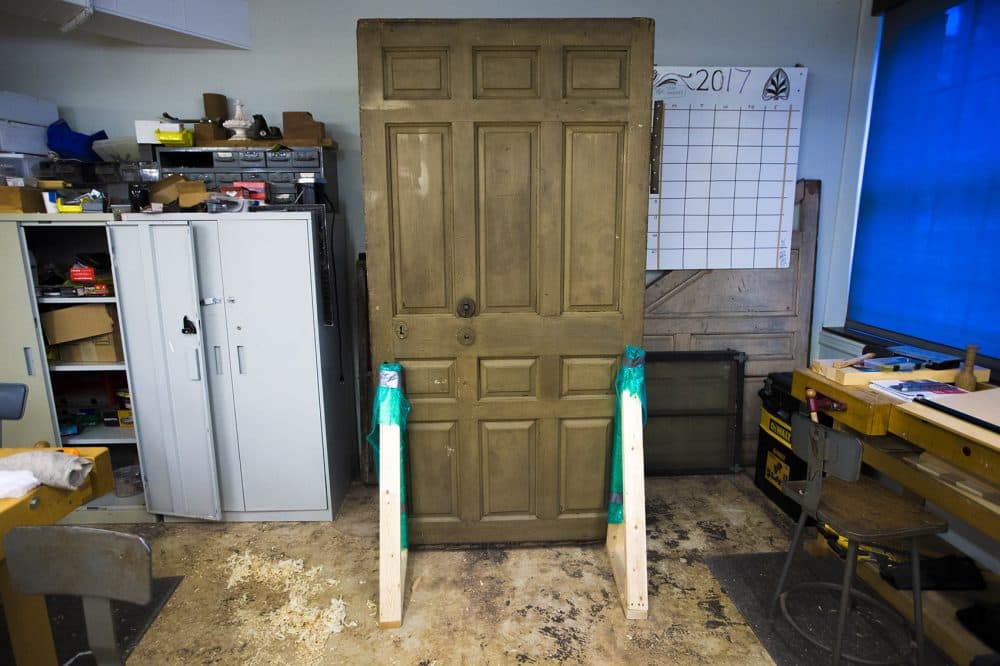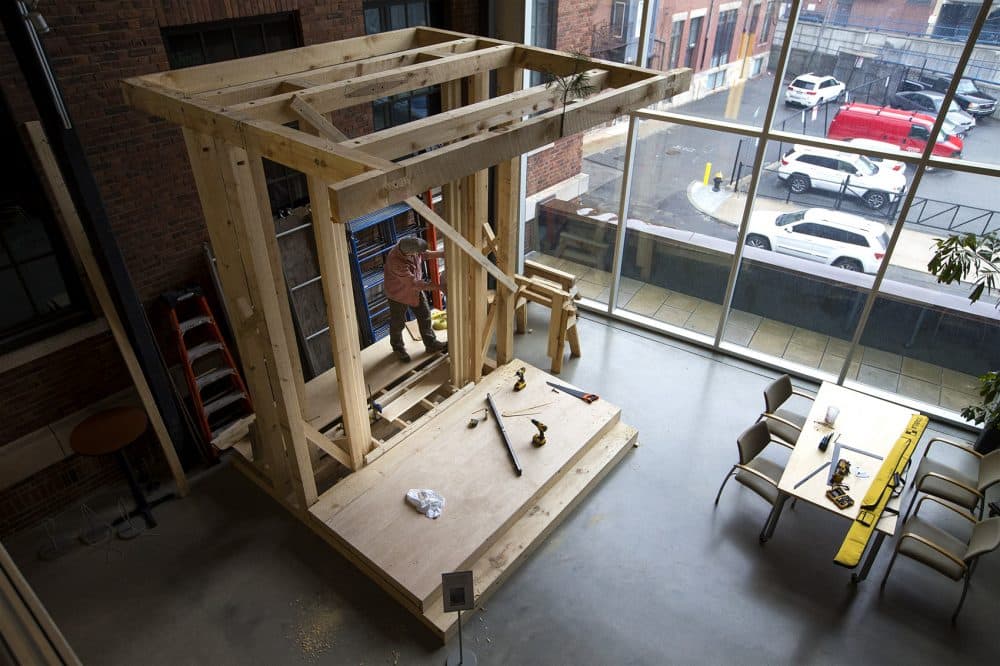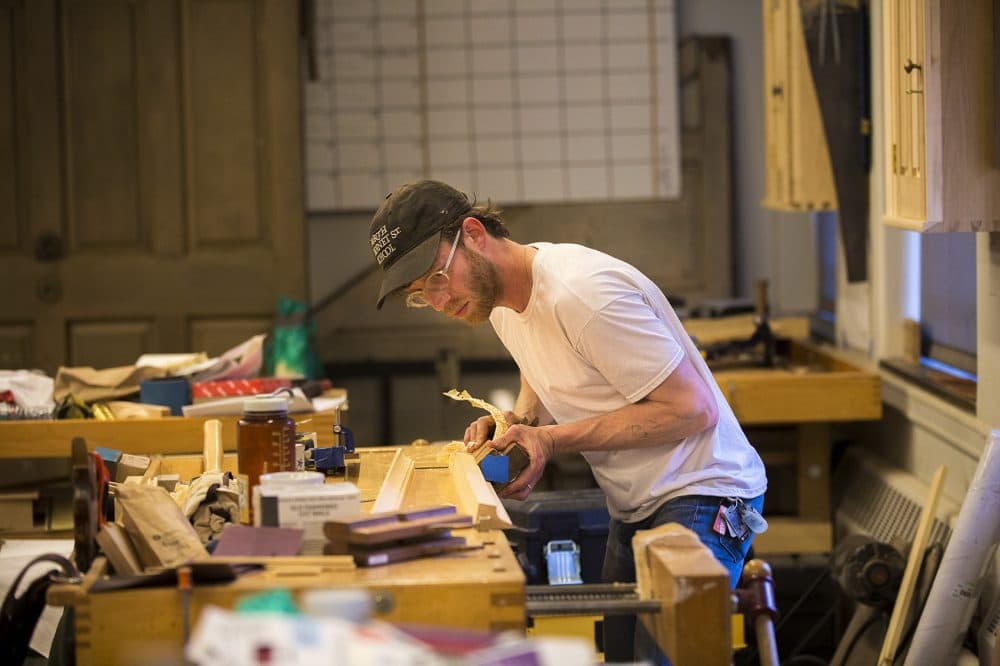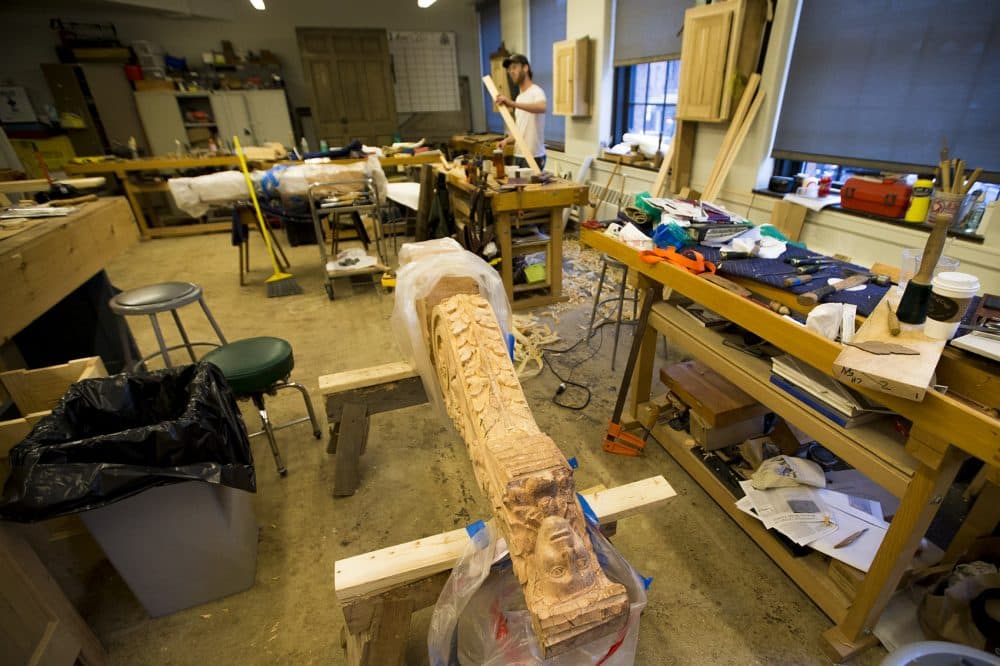Advertisement
In Storage For Decades, The Door To John Hancock's Boston Mansion Gets Restored
Resume
John Hancock, the first governor of Massachusetts and the author of that big, beautiful signature on the Declaration of Independence, was one of Boston’s larger-than-life characters.
So it's only appropriate that any display alluding to Hancock should be just as prominent.
And at the North Bennet Street School, a trade school in the North End, students are hammering and sawing away at their latest project. In the corner stands the centerpiece of that project: a door that's as big and bold as Hancock's signature.
The 4-foot-by-8-foot door once decorated the 18th-century statesman's Beacon Hill mansion.
"It's the showpiece for Hancock, so what better on the home he lived in than a fine door like this?" says Steven O’Shaughnessy, who heads the preservation carpentry program at the school.

That "fine door" spent decades bouncing around in various storage spaces, the last of which belonging to the Bostonian Society. About a year ago, the society asked the North Bennet Street School to take on the door as a preservation project.
“The first time I saw this door, I was like, 'Oh wow, this is going to be amazing!’ ” says Angie Larimer, a second-year student.
She says the door was a bit in rough shape when they got it out from decades in storage.
“Imagine this door laying in the classroom and there’s this crowd of a little over 10 students around it and everybody’s got Q-tips or cotton cloths and we’re all trying to clean this door to the best of our ability," Larimer says. "It came out looking really nice."
Removing the dirt isn’t the only challenge. Second-year student Ryan Czekanski-Moir says so is recreating the fine details of the structure around the door as it hung on the Hancock house -- using just old photographs and illustrations. He's building the column bases that will go above the doorway for its new display.

“That’s what this door is all about, trying to produce something that’s never been done before, never been seen for over 200 years," says Czekanski-Moir. "Every day is like a surprise."
The story of the door and the Hancock mansion is a preservationist's cautionary tale. The family originally suggested turning it into the governor’s mansion, but the state rejected that offer. Eventually, one of Hancock’s descendants sold the mansion in 1863, 70 years after his death. It was purchased by developers, torn down, and auctioned off in parts.
"When the Hancock mansion was destroyed," Larimer says, "there was a large outcry in the city about, how could we lose this monument to our history? How could be lose this piece?"
There are parts of the property scattered around the area. The stone staircase from the mansion's terrace is at Jamaica Pond. There's an indoor staircase at the Stone House in Manchester-by-the-Sea. Several artifacts ended up in Ticonderoga, New York, where there's a modern-day replica of the Hancock mansion, which functions as a museum and research library.

Despite this, the loss of the Hancock house still bites more than a century later, especially with preservationists like O’Shaughnessy.
“You can’t help but 150 years later be frustrated over that decision,” he says.
O'Shaughnessy admits there's an upside in losing the mansion, in that it spurred a historic preservation movement in New England.
"It was a martyr to the cause of saving our other important buildings,” he says. “I teach preservation carpentry, the restoration of early architecture, so there is a direct tie between the Hancock mansion and what I do for a living and what these students are learning to go out and do for a living.”
You can see the original John Hancock door and the replica of the entrance around it on Thursday at 5:30 p.m. at the North Bennet Street School. In June, it goes on display at the Old State House Museum in Boston for the rest of the year.
Next to the current State House, there's a plaque marking the spot of the original John Hancock mansion.
Correction: An earlier version of this story gave an inaccurate time for when you can see the door at the school. We regret the error.
This article was originally published on May 16, 2018.
This segment aired on May 16, 2018.

